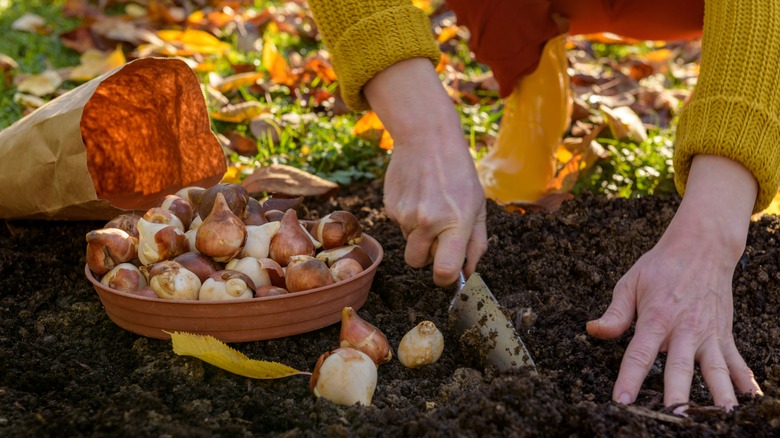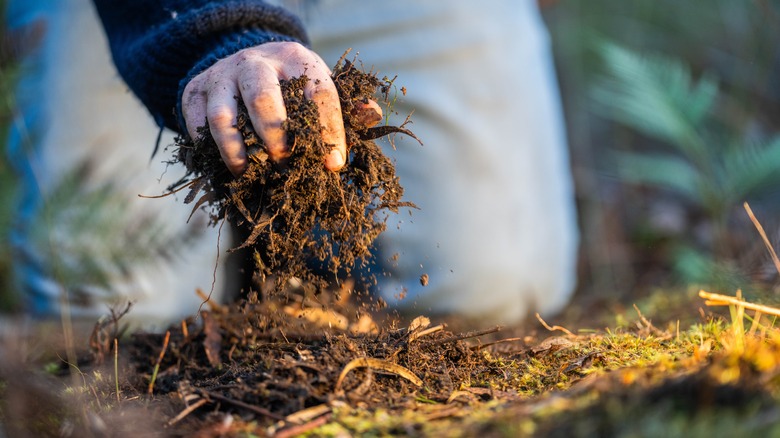When Planting Flowers Bulbs In Fall, Consider Adding These Soil Amendments
We may receive a commission on purchases made from links.
Tulips. Daffodils. Hyacinths. Is there anything more delightful than the first signs of spring pushing out of the ground, a welcome reprieve from harsh winter weather? Now that fall is in full swing, it's time to strategically plant bulbs for maximum bloom appeal in spring. Hardy bulbs go through a process called vernalization, which is a cold period where plants stay dormant until they've been exposed to low temperatures for long enough that they go on to vigorously flower. When planting flower bulbs this fall, consider adding soil amendments for the best blooms next year, like composted manure, garden compost, and straw mulch.
Once you've found the perfect site, use a garden cultivator to prepare the ground. Compacted soil is a bulb's worst enemy because it typically has poor drainage, which can quickly lead to rot. If your bulbs do manage to poke through the hard ground, you'll probably notice shorter growth. To avoid these issues, loosen up the soil before working in organic matter to create a perfect environment where your bulbs will love to rest during the winter. Garden Weasel's Rotary Cultivator from Amazon for $50 is an ergonomic handheld tool that will help you aerate your soil before adding amendments, while minimizing the strain on your lower back. Now, it's time to add your soil amendments.
Neutral soil amendments are best for fall bulbs
When your gardening goal is a colorful cottage garden full of spring-blooming bulbs, getting the soil right is one of the most important steps to success. Flower bulbs prefer neutral, loamy soils that aren't too acidic or alkaline. If you have clay soil, amend it with sand, peat moss, and aged leaf compost. Silt soils benefit from composted manure. Light soils can be improved by amending with garden compost and leaf mold. How much compost you should add to your garden soil is an age-old question. Consider getting a soil test to determine the existing pH and nutrient density so you can add the ideal soil amendments for your site.
In addition to not over-watering to avoid bulb rot, you shouldn't add soil amendments to individual bulb holes. Instead, compost, peat moss, and other soil amendments should be added to the entire flower bed, at least 1 foot below the depth of your holes to avoid root burn. A bulb planter, like the Flora Guard from Amazon for $17, makes planting various bulbs that prefer different depths much easier. Remember that you should never expose your bulbs to fresh manure or nitrogen-rich fertilizers, which can cause poor flowering. Also avoid top dressing with any acidic or alkaline amendments in favor of hardwood bark, coco coir, or even some straw mulches that have a neutral pH. Last but not least, make sure you plant healthy flower bulbs. It's not expensive to add a riot of color to your landscaping, especially with mixed collections like, the Willard & May Complete Spring Flower Garden from Amazon, which contains 50 tulip, daffodil, iris, and crocus bulbs for under $35.

